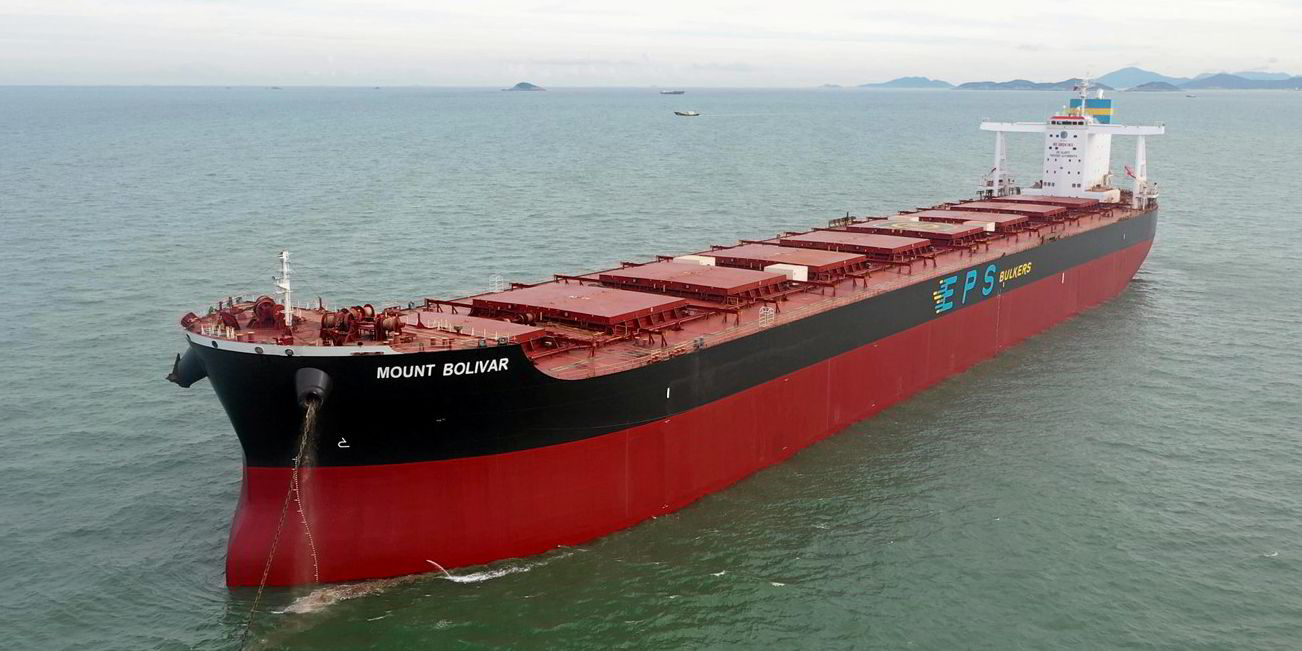In this week’s newsletter, we explore the future of the market for shipping coal after one major operator took the decision to shun the carbon-heavy commodity. Sign up for the newsletter at tinyurl.com/greenseas
____________
It is no accident that many of the capesize bulk carriers on order at shipyards in Asia are newcastlemaxes measuring 300 metres long and 50 metres wide. Those are the maximum dimensions for bulkers to fit in Australia’s port of Newcastle — the world’s largest hub for coal exports.
This is an important step, as it is a recognition by a major shipping company that its environmental, social and corporate governance (ESG) policies can — and should — take into consideration what cargoes it is willing to carry.
It is a move that might be hard for a VLCC owner to carry out in crude. But bulker owners, even those with newcastlemaxes, have a choice. Idan Ofer’s Eastern Pacific has made a choice that undoubtedly reflects a greater commitment to sustainability than continuing to carry the commodity.

But this move comes up against the paradox of coal: in a world facing the need to cut its greenhouse gas output, the hunger for coal has reached record heights.
Bulkers will be carrying large quantities of coal for some time to come.
Coal remains the top fuel for electricity generation in the world, but that appeared to be changing in 2019 and 2020. Coal-fired power generation was slumping and there was belief that it might have peaked in 2018.
Not the peak
That is not how it turned out. While the International Energy Agency (IEA) has yet to tabulate the final number for last year, it predicted in a December report that 2021 would be the highest on record for coal-fired power production.

Coal took the brunt of the power demand slump when the world was hit by the Covid-19 pandemic, but then economies came racing back with a fury, particularly China — the world’s leading consumer of the commodity.
Asia’s reliance on coal came to the fore in recent months.
China curbed its steel industry ahead of the Winter Olympics, which impacted imports of the coking coal used by that sector, but the gloves are expected to come off this month.
The one issue that most highlighted China’s dependence on coal was a power crisis in September and October last year, fuelled by a shortage of the commodity as the economy bounced back faster than domestic mines could keep up with.
And the IEA — an international advisory body on energy — believes coal demand may still have demand records ahead even as countries push for renewables.
Hunger in Asia
While coal is expected to decline in the US, the economic powerhouses of Asia will be in the driver’s seat.
The IEA estimates that China’s demand will grow by 1% per year, and India’s coal consumption will jump by 4% per year in the years ahead.
After rebounding 6% to nearly 7.91bn tonnes in 2021, the IEA estimated that global coal demand should rise to nearly 8.03bn tonnes this year, beating a record set in 2013.
It is then expected to stay there until the end of 2024.
That is not likely to last forever, but the trend line shows no hurry to meet calls to phase out unabated coal-fired power by 2050, even though the IEA considers coal to be the single-largest source of global carbon emissions.

Eastern Pacific chief executive Cyril Ducau told TradeWinds correspondent Jonathan Boonzaier that the company wants to play a “small role” reducing the economic viability of coal, in support of the Glasgow Climate Pact forged at the close of the United Nations’ COP26 conference last year.
That is in line with other efforts to put pressure on coal through shipping. Reuters reported in November that six European financing houses that provide 5% of the dry bulk sector’s capital finance were reducing exposures to vessels that carry coal or were considering it. Insurance giant Swiss Re also swore off reinsuring thermal coal transport starting in 2023.
All the while, coal may not have reached its peak — and even when demand for the commodity ultimately begins its descent, there will still need to be bulkers to carry it for some time to come.
The question is, will other shipowners and operators follow the path forged by Eastern Pacific, distinguishing themselves by shunning coal?
More news on sustainability and the business of the ocean
Will hydrogen really be shipped as hydrogen?
The first liquefied hydrogen carrier has entered into operation, leaving its load port for the first time. Hydrogen holds promise as a zero-carbon fuel, but Recharge’s Leigh Collins poses the question: will building liquefied H2 carriers ultimately be a waste of money? After all, it may make more economic sense to use ammonia, which can be carried on existing vessels, as a way to ship hydrogen. Click here to read the story.
Captain’s log on an oil spill in Peru
After a massive underwater volcanic eruption in Tonga, a refinery in Peru suffered an oil spill when waves hit while an Italian tanker was unloading Brazilian crude. Nearly two weeks later, “letters of protest” by the master of the vessel, Captain Giacomo Pisani, shed new light on what happened. Meanwhile, Peruvian authorities have ordered Spain’s Repsol, which controls the refinery, to halt tanker loadings and unloadings. Click here to read the story.
Quieting ships to save endangered orcas
In Canada, an effort by the Port of Vancouver to protect southern resident killer whales from noise pollution has garnered 80% participation from vessel operators. Across the border, an effort to do the same in Puget Sound is getting underway. Will voluntary measures be enough for this endangered orca population? Click here to read the story.



